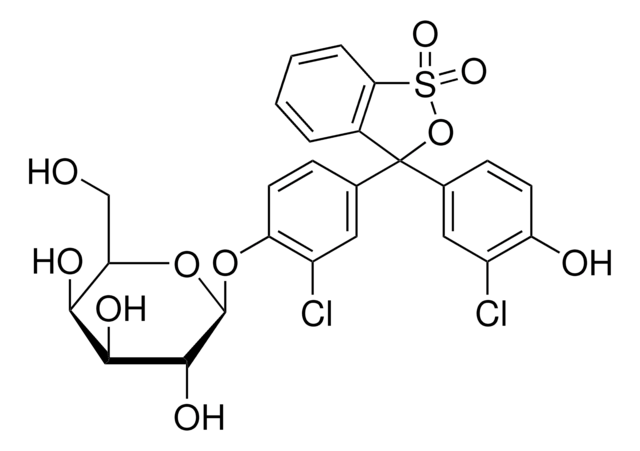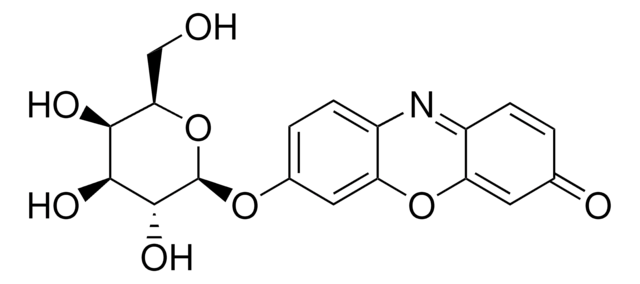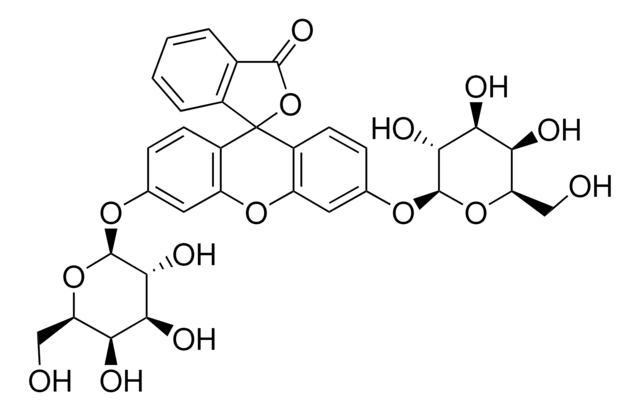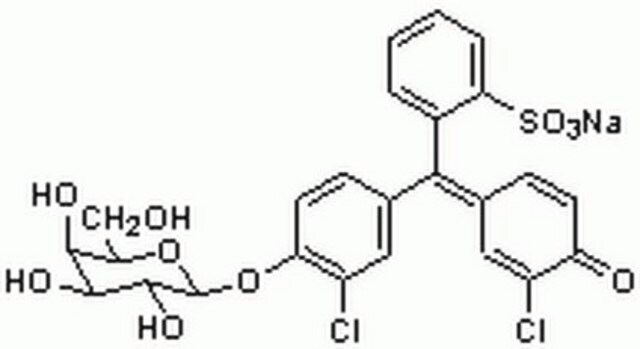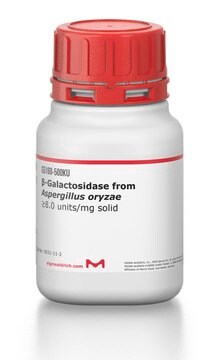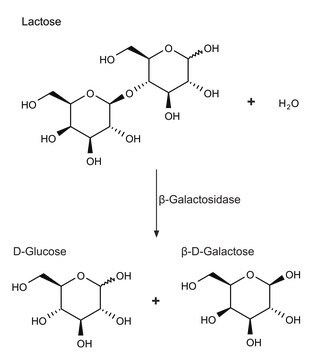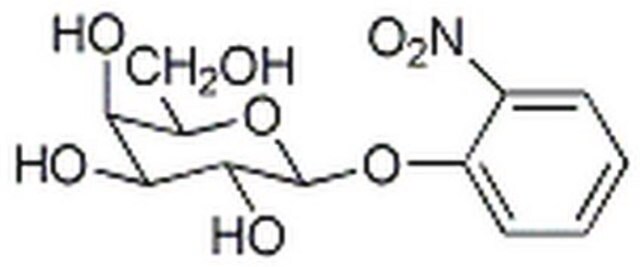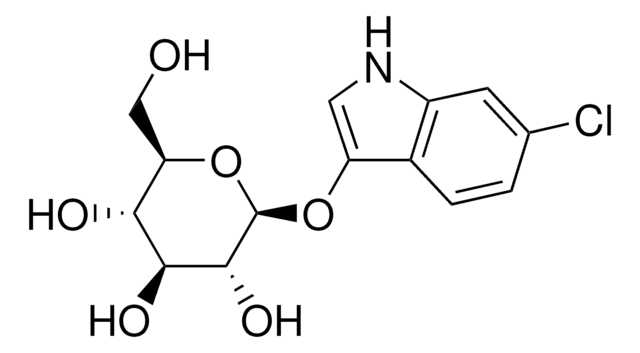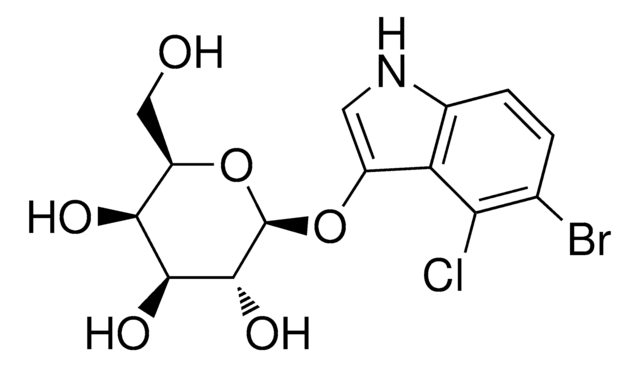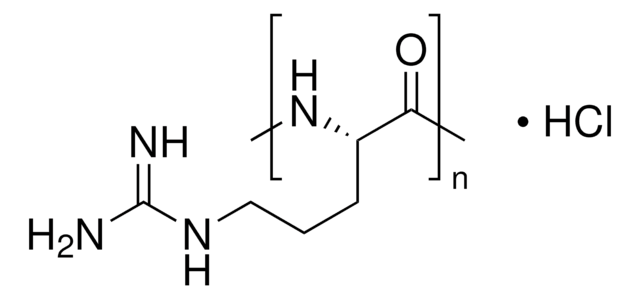59767
Chlorophenol Red-β-D-galactopyranoside
β-galactosidase, ≥90% (HPLC), powder or crystals
Sinonimo/i:
CPRG, Chlorophenol Red-β-D-galactoside
About This Item
Prodotti consigliati
Nome del prodotto
Chlorophenol Red-β-D-galactopyranoside, ≥90% (HPLC)
Saggio
≥90% (HPLC)
Stato
powder or crystals
Solubilità
water: 20 mg/mL, clear, orange to very deep red
Temperatura di conservazione
−20°C
Stringa SMILE
OC[C@H]1O[C@@H](Oc2ccc(cc2Cl)C(=C3/C=CC(=O)C(Cl)=C3)\c4ccccc4S(O)(=O)=O)[C@H](O)[C@@H](O)[C@H]1O
InChI
1S/C25H22Cl2O10S/c26-15-9-12(5-7-17(15)29)21(14-3-1-2-4-20(14)38(33,34)35)13-6-8-18(16(27)10-13)36-25-24(32)23(31)22(30)19(11-28)37-25/h1-10,19,22-25,28,30-32H,11H2,(H,33,34,35)/b21-12-/t19-,22+,23+,24-,25-/m1/s1
YOUWVNCQJOMMEU-AETRGLENSA-N
Cerchi prodotti simili? Visita Guida al confronto tra prodotti
Descrizione generale
Applicazioni
- in paper-based cell-free protein expression system for target RNA detection
- in colorimetric detection of multiple clinically relevant mutations using a lacZ output gene
- in colorimetric assay for bacteria quantification
Altre note
Codice della classe di stoccaggio
11 - Combustible Solids
Classe di pericolosità dell'acqua (WGK)
WGK 3
Punto d’infiammabilità (°F)
Not applicable
Punto d’infiammabilità (°C)
Not applicable
Dispositivi di protezione individuale
Eyeshields, Gloves, type N95 (US)
Scegli una delle versioni più recenti:
Possiedi già questo prodotto?
I documenti relativi ai prodotti acquistati recentemente sono disponibili nell’Archivio dei documenti.
I clienti hanno visto anche
Il team dei nostri ricercatori vanta grande esperienza in tutte le aree della ricerca quali Life Science, scienza dei materiali, sintesi chimica, cromatografia, discipline analitiche, ecc..
Contatta l'Assistenza Tecnica.